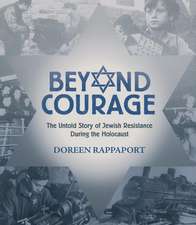The Psychology of Good and Evil: Why Children, Adults, and Groups Help and Harm Others
Autor Ervin Stauben Limba Engleză Paperback – 20 iul 2003
| Toate formatele și edițiile | Preț | Express |
|---|---|---|
| Paperback (1) | 403.20 lei 6-8 săpt. | |
| Cambridge University Press – 20 iul 2003 | 403.20 lei 6-8 săpt. | |
| Hardback (1) | 652.62 lei 6-8 săpt. | |
| Cambridge University Press – 20 iul 2003 | 652.62 lei 6-8 săpt. |
Preț: 403.20 lei
Nou
Puncte Express: 605
Preț estimativ în valută:
77.16€ • 80.10$ • 64.34£
77.16€ • 80.10$ • 64.34£
Carte tipărită la comandă
Livrare economică 24 martie-07 aprilie
Preluare comenzi: 021 569.72.76
Specificații
ISBN-13: 9780521528801
ISBN-10: 0521528801
Pagini: 612
Ilustrații: 2 b/w illus. 2 tables
Dimensiuni: 154 x 228 x 34 mm
Greutate: 0.81 kg
Ediția:New.
Editura: Cambridge University Press
Colecția Cambridge University Press
Locul publicării:New York, United States
ISBN-10: 0521528801
Pagini: 612
Ilustrații: 2 b/w illus. 2 tables
Dimensiuni: 154 x 228 x 34 mm
Greutate: 0.81 kg
Ediția:New.
Editura: Cambridge University Press
Colecția Cambridge University Press
Locul publicării:New York, United States
Cuprins
Part I. Introduction and Core Concepts: 1. Introduction: good and evil: themes and overview; 2. Studying the pivotal role of bystanders; 3. Studying and promoting altruism and studying and working to prevent genocide: the guiding role of early survival; 4. Is evil a useful concept for psychologists and others?; 5. Basic needs and their role in altruism and aggression; Part II. The Roots of Helping and Passivity: 6. Helping a distressed person: social, personality, and stimulus determinants; 7. Spontaneous (or impulsive) helping; 8. Social and prosocial behavior; 9. The power to help others: report on a Psychology Today survey on values, helping, and well being; Part III. How Children Become Caring and Helpful vs. Hostile and Aggressive: Section 1. Culture, Socialization, and Children's Experience: 10. Origins of caring, helping, and nonaggression: parental socialization, the family system, schools, and cultural influence; 11. Natural socialization: participation in positive behavior and experiential learning; 12. The origins of hostility and aggression; 13. Cultural societal roots of violence: youth violence; 14. Bystanders and bullying; 15. Students' experience of bullying and other aspects of their lives in middle school in Belchertown; 16. Self-esteem and aggression; 17. Father-daughter incest; Section 2. Interventions to Reduce Aggression and Promote Caring and Helping: 18. Reducing boys' aggression: learning to fulfill basic needs constructively; 19. The Caring Schools project; Part IV. The Origins of Genocide and Other Collective Violence: 20. A note on the cultural societal roots of violence; 21. Psychology of bystanders, perpetrators, and heroic helpers; 22. Steps along a continuum of destruction; 23. The SS and the psychology of perpetrators: The interweaving and merging of role and person; 24. The origins of genocide: Rwanda; 25. Bystanders as evil: the example of Rwanda; 26. Individual and group identities in genocide and mass killing; 27. Mass murder: origins, prevention, and US involvement; 28. When instigation does not result in mass murder; 29. Persian Gulf Conflict was reflection of stormy undercurrents in US psyche; 30. Mob violence: societal-cultural sources, instigators, group processes, and participants; 31. Understanding and Preventing Police Violence; Part V. The Aftermath of Mass Violence: Trauma, Healing, and Reconciliation: 32. Preventing group violence; 33. Kosovo: the need for flexible bystander response; 34. The effects of violence on groups and their members; 35. Healing, reconciliation, and forgiving after genocide and other collective violence; 36. Healing, forgiveness, and reconciliation in Rwanda: project summary and outcome; 37. Further avenues to prevention; 38. Commentary: human destructiveness and the refugee experience; 39. A vision of holocaust education in holocaust centers and schools; 40. Out of hiding; 41. Review of: Legacy of Silence: encounters with children of the Third Reich; 42. What can we learn from this tragedy?: a reaction days after September 11th, 2001; Part VI. Creating Morally Inclusive Societies: 43. Transforming the bystander: altruism, caring, and social responsibility; 44. Changing cultures and society; 45. Blind vs. constructive patriotism: moving from embeddedness in the group to critical loyalty and action; 46. Manifestations of blind vs. constructive patriotism: summary of findings; 47. The ideal university in the real world; Conclusion: 48. Creating caring societies; Appendix: what are your values and goals?
Recenzii
'… an excellent source of material and ideas for those teaching in the areas of aggression, pro- and antisocial behaviour, and intergroup conflict.' Educational Psychology
Descriere
This book attempts to understand the psychological roots of goodness and evil.

















